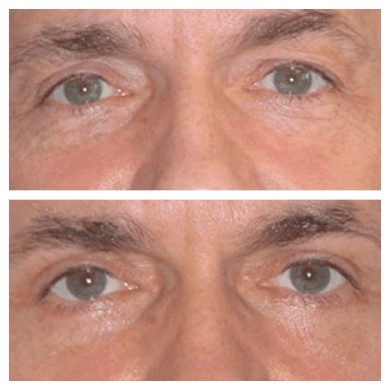Hearing is a critical sense that connects us to the world, allowing us to communicate, enjoy music, and detect danger. However, hearing problems can significantly affect an individual’s quality of life. Identifying hearing issues, especially in infants, young children, and those who cannot communicate effectively, is crucial. One of the most reliable methods for assessing hearing function is the Bera test, also known as the Brainstem Evoked Response Audiometry (BERA) test. This article explores how the Bera test works, its importance, and what makes it the best option for diagnosing hearing impairments.
What is the Bera Test?
The Bera test is a non-invasive, objective hearing test that evaluates the function of the auditory nerve and the brainstem’s response to sound. Unlike subjective hearing tests, where the patient’s response to sounds is required, the Bera test does not depend on the patient’s active participation. This makes it ideal for infants, young children, and individuals with developmental disabilities or other conditions that prevent them from responding reliably to traditional hearing tests.
The Science Behind the Bera Test
The Bera test measures the electrical activity generated by the auditory nerve and brainstem in response to sound stimuli. These electrical signals, known as brainstem auditory evoked potentials (BAEPs), are tiny and occur within the first 10 milliseconds after a sound is heard. The test captures and analyzes these signals, providing a detailed view of how sound travels from the ear to the brain.
When sound waves enter the ear, they are transformed into electrical signals by the cochlea in the inner ear. These signals travel along the auditory nerve to the brainstem, where they are processed and sent to higher brain regions for interpretation. The Bera test records the electrical activity at various points along this pathway, allowing doctors to pinpoint where any disruptions or delays occur.
Why is the Bera Test Important?
The Bera test is essential for diagnosing hearing impairments, especially in patients who cannot undergo traditional hearing tests. Early detection of hearing loss is critical for effective intervention and treatment, particularly in infants and young children. Hearing loss that is identified and treated early can significantly improve language development, social skills, and overall quality of life.
Additionally, the Bera test can help diagnose neurological conditions that affect the auditory pathway, such as auditory neuropathy, multiple sclerosis, and brainstem tumors. By providing detailed information about the auditory system’s function, the Bera test can guide treatment decisions and help monitor the effectiveness of interventions.
How the Bera Test is Performed
The Bera test is a simple and painless procedure that typically takes about 30 to 60 minutes. Here’s a step-by-step breakdown of how the Bera test is performed:
-
Preparation: The patient is asked to lie down comfortably in a quiet room. Infants and young children may be given a mild sedative to help them remain still during the test. In some cases, the test can be performed while the child is naturally asleep.
-
Electrode Placement: Small electrodes are placed on the patient’s scalp and behind the ears. These electrodes are connected to a computer that records the brain’s electrical activity.
-
Sound Stimulation: The patient wears headphones or ear inserts that deliver a series of clicking sounds or tone bursts. The sounds are presented at different frequencies and volumes to stimulate the auditory pathway.
-
Recording and Analysis: As the sound stimuli are presented, the electrodes capture the electrical activity generated by the auditory nerve and brainstem. The signals are displayed on a computer screen as waveforms, which are analyzed to assess the function of the auditory pathway.
-
Results Interpretation: The waveforms generated during the test are analyzed to identify any abnormalities in the auditory pathway. A normal Bera test will show a specific pattern of waves at expected intervals, indicating that sound is being processed correctly. Abnormal results may indicate a hearing impairment or a neurological condition affecting the auditory pathway.
Who Should Have a Bera Test?
The Bera test is recommended for various individuals, particularly when there is a need to assess hearing without relying on the patient’s responses. Some common indications for a Bera test include:
-
Newborn Hearing Screening: The Bera test is often used in newborn hearing screening programs. Early detection of hearing loss in infants is crucial for timely intervention, which can significantly impact language development and cognitive skills.
-
Unresponsive or Non-Cooperative Patients: For individuals who cannot participate in traditional hearing tests due to developmental delays, cognitive impairments, or other medical conditions, the Bera test provides a reliable alternative for assessing hearing function.
-
Suspected Auditory Neuropathy: Auditory neuropathy is a condition where the auditory nerve does not transmit sound signals properly to the brain. The Bera test can help diagnose this condition by revealing disruptions in the auditory pathway.
-
Diagnosis of Neurological Disorders: The Bera test is useful for diagnosing neurological conditions that affect the brainstem or auditory nerve, such as multiple sclerosis, brainstem tumours, and other central nervous system disorders.
-
Monitoring Hearing in At-Risk Populations: Individuals with a history of premature birth, low birth weight, or other risk factors for hearing loss may undergo regular Bera tests to monitor their auditory function over time.
Advantages of the Bera Test
The Bera test offers several advantages that make it the best choice for assessing auditory function in specific populations:
-
Non-Invasive and Painless: The Bera test is entirely non-invasive, involving only the placement of electrodes on the scalp. It is painless and does not require any surgical procedures or incisions.
-
Objective and Reliable: Since the Bera test does not rely on the patient’s active participation, it provides an objective assessment of hearing function. This makes it highly reliable, especially in individuals who cannot communicate or respond to sounds consistently.
-
Early Detection of Hearing Loss: The Bera test is highly effective in detecting hearing loss in newborns, infants, and young children. Early diagnosis allows for timely intervention, which can significantly improve language development and overall cognitive outcomes.
-
Diagnostic Tool for Neurological Conditions: In addition to assessing hearing function, the Bera test is a valuable tool for diagnosing neurological disorders that affect the auditory pathway. This makes it a versatile test with applications beyond hearing evaluation.
-
Quick and Efficient: The Bera test is relatively quick, typically taking less than an hour to complete. The results are available immediately, allowing for prompt diagnosis and treatment planning.
Limitations of the Bera Test
While the Bera test is highly effective, it does have some limitations:
-
Limited Frequency Range: The Bera test primarily assesses the auditory pathway’s response to high-frequency sounds. It may not provide comprehensive information about hearing loss in lower frequencies, which are important for understanding speech.
-
Sensitivity to External Factors: The test results can be influenced by external factors such as muscle movements, electrical interference, and the patient’s state of alertness. Ensuring a quiet environment and minimizing movement during the test is essential for accurate results.
-
Requirement for Sedation: In some cases, especially with young children, sedation may be necessary to ensure the patient remains still during the test. While sedation is generally safe, it carries some risks, and parents should discuss these with their healthcare provider.
Conclusion: Why the Bera Test is the Best
The Best Bera test is the best option for diagnosing hearing impairments and assessing auditory function in challenging populations. Its non-invasive, objective, and reliable nature makes it an essential tool in modern audiology and neurology. Whether used for newborn hearing screening, diagnosing auditory neuropathy, or evaluating neurological conditions, the Bera test provides invaluable information that guides treatment decisions and improves patient outcomes.
For parents, caregivers, and healthcare providers, understanding how the Bera test works and its benefits is crucial for ensuring early detection and effective management of hearing impairments. As advancements in technology continue to improve the accuracy and efficiency of the Bera test, its role in safeguarding auditory health will only become more significant.




